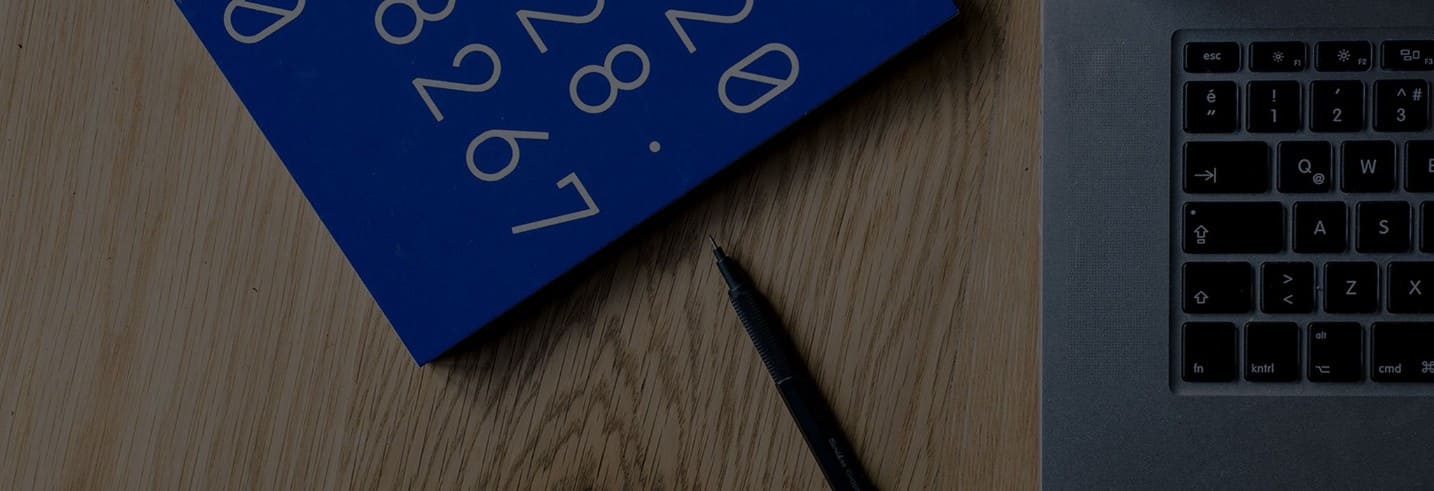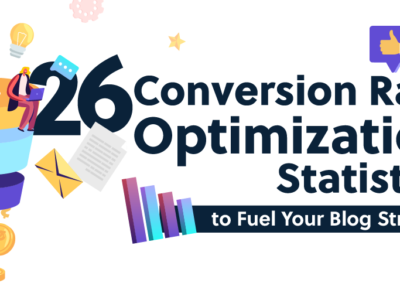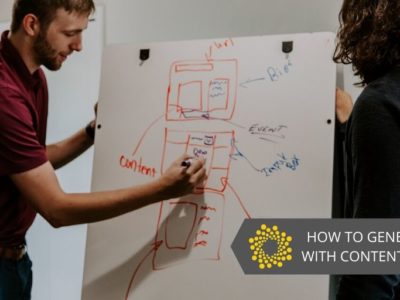Unless you download our free eBook below, this post fails to convert. And it’s a shame for a blog post that talks about conversion to not convert at all. But let’s forget about that for now, because this post is not about our blog. It’s about your blog and how we can turn your readers into leads.
It may sound too structured but a blog that converts follows a formula. You can’t write a blog post, publish, distribute and then expect that your readers will subscribe to your e-newsletter, send their inquiries, or take action the way you want them to. If you’re lucky, they will convert, but most often, they won’t.
There are two things that you have to give attention to for a high converting blog—content and on-page ads. Let’s learn how these two can make your blog work for your business.
CONTENT
Your blog is nothing without content. It’s the heart of your content marketing strategy, and without it, readers will have no reason to visit your page.
Developing content does not end with writing. That’s why it’s called ‘develop.’ You have to grow and cultivate your content from an idea to a high converting writing piece. So how do you do it?
Here are the things to do to develop a content that yields conversions.
1. Know Who You Are Writing For
The first rule in writing (not just for blogs) is to know your audience and speak their language. It is in knowing who your writing for are you able to develop a voice that appeals to their reading appetite.
Communicate the way your readers want to be communicated. Know their profile, socio-demographics, interests, goals, and desires. This is where your buyer persona becomes important. Your buyer persona affords you deeper understanding of your target audience. What are their backgrounds? How do they speak? What are their goals in life or at work? How do their minds process?
If you have yet to develop your buyer persona, Hubspot published a post on how to create detailed buyer personas for businesses.
Also Read: Mastering Lead Generation: Expert Strategies
2. Produce a Content Based on the Buyer’s Journey
After knowing how to talk to your readers, the next question to ask is “Is your blog post addressing your readers’ concerns?”
Apparently, what you say is as important as how you say it. And what you have to say has to match the stage your reader is at in the buyer’s journey. Yes, you read it right. Your readers goes through a journey that leads to converting into your lead or customer.
HubSpot summarizes the buyer’s journey here with recommendations on content types you can use for each stage. In a nut shell, the buyer’s journey has three stages: awareness, consideration, and decision.
Awareness Stage – when the buyer has realized the symptoms of their problem, opportunity or need to do something but is still unaware of the solution.
Consideration Stage – when the problem, opportunity or need has been identified, and the buyer begins to find solutions.
Decision Stage – is when the buyer determines the appropriate solution but needs a push to arrive to a final decision.
Map out your content calendar based on your target stage in the buyer’s journey. This will help you design targeted content with appropriate messages.
3. Cliffhangers Work
Who’s not a fan of cliffhangers? They excite us and trigger our desire for more. And because we want more, we are willing to give a little to get what we want in return.
In blogging, one secret is to not write everything your readers need—only what’s enough to pique their interest. Once they’re hungry for more information, they will be willing to exchange their contact details with additional learnings.
For instance, you can write a post that tells them how to convert blog readers into leads by improving content, but you won’t tell them how to do it with methods outside the blog. Why? That’s something they will know if they download the free eBook below.
4. Break Down Your Ideas
Often, online readers are impatient and too busy to read your entire article. They skim.
Write your content in a way skimmers can absorb your message without reading your every word. Use subheads to thematize and categorize ideas in your article. Break down lists with bullet points or numbering. Use bold fonts to highlight important sentences or phrases.
The goal is to send your message across to those who opt not to consume your entire piece.
5. Don’t Forget Your CTAs
Many—if not all—readers have to be told what needs to be done. They need a push and that’s what you have to give them. If you want them to download an eBook, tell them to “Download FREE eBook.” If you want them to send their inquiries, tell them to “Inquire.”
Make it easy for them to decipher your message. Be bold and direct with your calls to action.
ON-PAGE ADS
Now that you know how to develop a content that converts, it’s time to learn how to make on-page ads to increase your chances of converting. Use them with caution. When abused, they can be annoying. You don’t want to push your readers away.
6. Static Ad (Side Bar or Signup Form)
Communicate the action you want your readers to do with a side bar. A signup form where they can subscribe to your e-newsletter or drop their email addresses is an effective way convert readers into leads. Here’s a sample from Content Marketing Institute.

7. Scrolling Ad
In case your readers miss your top side banner ad, your scrolling ad is here to the rescue. It’s almost the same with your side banner except that it follows your reader when they scroll down on your page. Check out the scrolling signup banner of Kissmetrics blog.
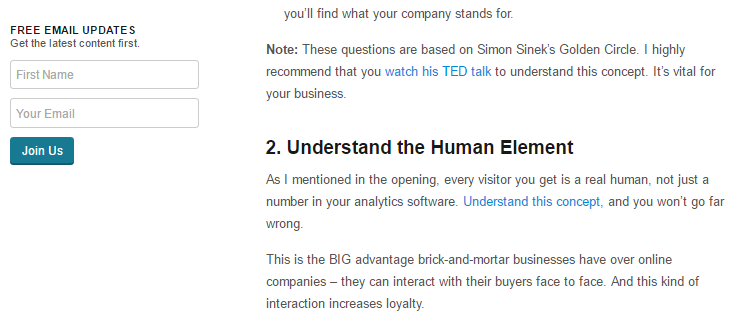
8. Notification Bar
Place a notification bar like HelloBar on top or at the bottom of your page to communicate an action or promote a content. Here’s a sample notification bar from My Blogger Tricks in which trending and latest posts are suggested. You can also put a text box where they can subscribe to your offer by entering their email address.

9. Pop-Ups
Don’t let your readers leave without giving your last shot. Set up a pop-up that appears whenever your reader is about to leave your page. It’s your last chance to convert them into leads before they close the window.
On the other hand, you can use a timed pop-up that appears whenever a reader has remained a certain amount of time on your page. Here’s a sample pop-up from Accessally.
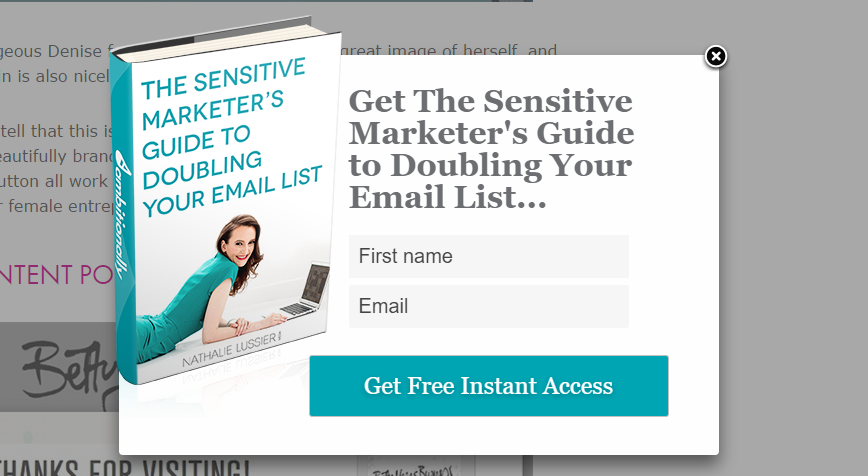
In Conclusion
A blog that converts is a blog that is well thought out. Improve your chances of converting blog readers into leads these pointers. You can also read our Lead Generation Guide for more tips. Experiment. Analyze. Continue the tactic that performs and replace what’s not. Happy converting!


